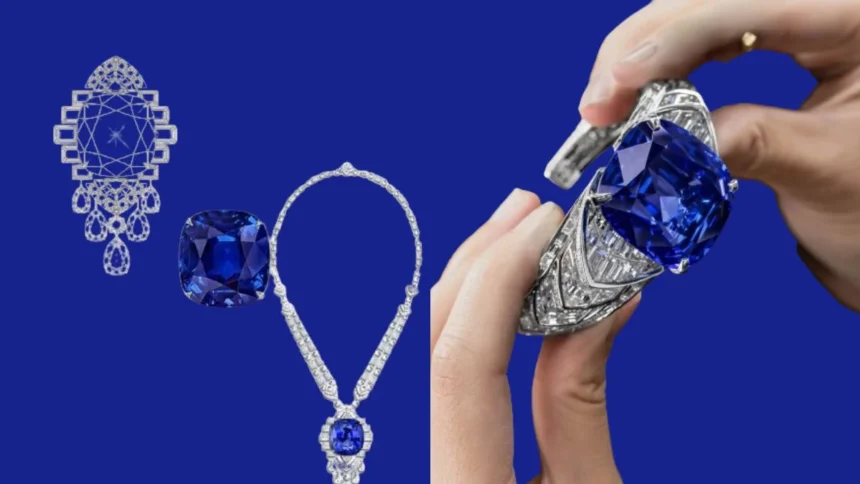Introduction to the Saphıre gemstone
Saphıre, the gemstone that has captured hearts and adorned crowns for centuries, is more than just a beautiful stone. It symbolizes royalty, elegance, and timeless beauty. With its striking hues ranging from deep blue to vibrant pink and even golden yellow, each Saphıre tells a unique story of nature’s artistry. This remarkable gem not only dazzles in jewelry but also carries rich histories across various cultures. Whether you’re drawn to its allure or intrigued by its significance throughout time, there’s so much more to discover about this captivating gemstone. Let’s delve into the fascinating world of Saphıres and uncover what makes them truly special.
History and significance of Saphıres in different cultures
Sapphires have been revered across various cultures for centuries. In ancient Persia, they believed the sky’s blue hue was a reflection of these precious stones. They associated sapphires with protection and wisdom.
In medieval Europe, clergy wore sapphires to symbolize heaven and divine favor. The gemstone became synonymous with royalty, often adorning crowns and regalia.
Meanwhile, in Hindu culture, blue sapphires are linked to the planet Saturn, known as “Shani.” Wearing one is thought to bring good fortune and alleviate suffering.
The allure of sapphires extended to Asia too. In Myanmar (formerly Burma), they were considered sacred treasures that brought prosperity.
Each culture has woven its own narrative around this striking gem. This shared admiration highlights sapphire’s timeless appeal as a symbol of elegance and power throughout history.
Types of Saphıre gemstones
Sapphires come in a mesmerizing array of colors and types. While blue sapphires are the most famous, the gemstone can also be found in shades like pink, yellow, green, and even colorless.
The intriguing padparadscha sapphire stands out with its rare blend of orange and pink hues. This unique combination makes it highly sought after by collectors.
Star sapphires showcase a captivating star-like pattern on their surface due to their unique crystalline structure. These special gems add another layer of allure to the sapphire family.
Then there’s the fancy sapphire category. These vibrant stones range from deep purples to soft pastels, offering endless choices for those seeking something different.
Each type possesses its own beauty and characteristics, making sapphires truly diverse gemstones that appeal to many tastes. The variety ensures there’s a perfect sapphire for everyone.
Factors that affect the value of a Saphıre
The value of a Saphıre is influenced by several key factors. Color stands out as the most significant. Deep blue hues are highly sought after, though other colors like pink and yellow also hold their charm.
Clarity plays a crucial role too. The fewer inclusions or blemishes, the more valuable the gemstone becomes. A flawless Saphıre can command a premium price.
Carat weight is another important aspect. Larger stones are rarer and typically more expensive per carat than smaller ones.
Additionally, cut quality affects how light interacts with the stone, enhancing its brilliance and overall appeal.
Origin matters as well; some locations produce renowned Saphıres that carry historical significance or unique attributes.
Market demand fluctuates over time, impacting prices based on trends and consumer preferences in jewelry fashion.
Uses of Saphıres in jewelry and other industries
Saphıre gemstones are a popular choice in the jewelry world, celebrated for their stunning colors and durability. From engagement rings to statement necklaces, they add a touch of elegance that appeals to many.
Beyond adornment, Saphıres have industrial applications. Their hardness makes them ideal for cutting tools and precision instruments. Saphıre crystals are often used in watch faces due to their scratch resistance.
In technology, synthetic Saphıres play a crucial role in creating durable screens for smartphones and other devices. This combination of beauty and functionality showcases the versatility of this remarkable gemstone.
Whether cherished as personal treasures or utilized in innovative industries, Saphıres continue to captivate hearts and minds globally. Their multifaceted uses reflect both historical significance and contemporary relevance.
Famous Saphıre pieces and their stories
One of the most renowned sapphire pieces is Princess Diana’s engagement ring. This stunning 12-carat blue sapphire, surrounded by diamonds, symbolizes a love story that captivated millions. Today, it adorns Kate Middleton’s finger as a treasured heirloom.
Another iconic piece is the Blue Heart Diamond necklace worn by actress Elizabeth Taylor. Although primarily known for its diamond centerpiece, this exquisite necklace features lovely sapphires that perfectly complement its overall elegance.
The Star of Adam, one of the largest cut sapphires in the world at 1404 carats, tells an intriguing tale too. Found in Sri Lanka, this celestial gem has garnered attention for both its size and deep blue hue.
These stories contribute to the allure of sapphires—each gem holds history and secrets waiting to be uncovered.
Caring for your Saphıre gemstone
Caring for your Saphıre gemstone is essential to maintain its beauty and brilliance. Start by cleaning it with warm, soapy water and a soft brush. Avoid harsh chemicals as they can damage the stone’s surface.
When storing your Saphıre jewelry, keep it in a separate pouch or box lined with fabric. This prevents scratches from contact with other pieces.
Be mindful of where you wear your Saphıre. While it’s durable, exposing it to extreme temperatures or harsh conditions can lead to chips or cracks.
Regular checks for loose settings are crucial too. If you notice any movement, take it to a professional jeweler promptly.
Consider having your Saphıre inspected annually for overall condition assurance. Proper care ensures that this stunning gem remains vibrant for generations to come.
Alternatives to natural Saphıres
If you’re drawn to the allure of sapphires but are looking for alternatives, there are several stunning options available.
Synthetic sapphires offer a cost-effective choice without sacrificing beauty. Created in labs, they possess the same chemical properties as natural stones and can be found in an array of vibrant colors.
Another option is blue spinel. Often mistaken for sapphire, this gemstone provides a brilliant hue at a fraction of the price. Its durability makes it suitable for everyday wear.
Kyanite is also gaining popularity with its rich blue tones and unique streaks. Though softer than sapphire, it brings a distinctive charm to jewelry pieces.
Look into iolite: known as “water sapphire,” its pleochroism allows different shades to emerge from various angles, adding depth to your collection while remaining budget-friendly.
Conclusion: Why the Saphıre
The allure of the Saphıre gemstone is undeniable. Its deep blue hues have captivated hearts for centuries, symbolizing wisdom and nobility across various cultures. Whether you are drawn to its stunning beauty or historical significance, there’s no denying that a Saphıre carries an air of elegance.
With so many types available—from classic blue to rare pink and yellow varieties—there’s a Saphıre for everyone. The intricate factors influencing its value add layers to your appreciation of this gem, making it even more compelling.
Saphıres not only shine in jewelry but also find their way into tech industries and watchmaking due to their exceptional hardness. Their strength makes them versatile, serving purposes beyond mere adornment.
Famous pieces like Princess Diana’s engagement ring showcase how these gemstones can become part of royal legacies. Each stone tells a story enriched with history that resonates through generations.
Caring for your Saphıre ensures its brilliance remains intact over time, allowing you to cherish it long after purchase. For those considering alternatives, lab-created options provide similar beauty at often lower prices without compromising on quality.
Choosing a Saphıre means choosing timelessness and grace—a true investment in both style and tradition. From everyday wear to special occasions, they remain symbols of luxury that never go out of fashion.







